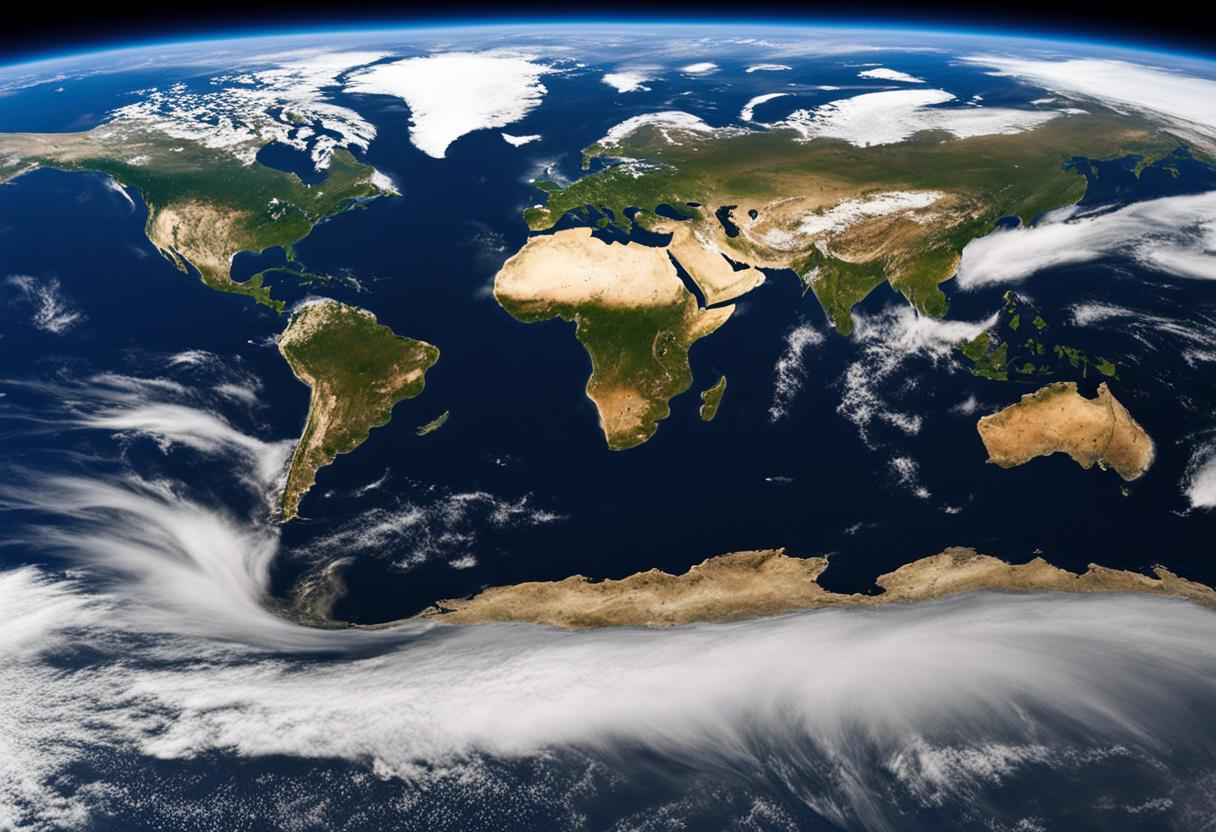Though we display a commendable skill at establishing goals for the reduction of global warming gas emissions into the atmosphere, we regrettably fall short when it comes to delivering on these objectives. It’s becoming evident that our endeavours to lower greenhouse gas emissions aren’t proceeding swiftly enough to stave off the increasingly destructive repercussions of climate change, like augmented storms, deluges and heatwaves.
Techniques of geoengineering, conceived to chill the earth, are under consideration, such as introducing alkaline chemicals to the sea, spraying saline concoctions into clouds and launching reflective particles into the stratosphere. Early, small-scale experiments have begun to evaluate their potential impact and safety. These investigations were well-detailed by Eric Niller in the Wall Street Journal in February.
More of the sun’s heat will be repelled by brighter clouds, which will serve to cool the ocean surrounding the Great Barrier Reef that’s suffering from intense coral mortality due to the sea’s rising temperature.
In 1991, an eruption from Mount Pinatubo in the Philippines released ash, carbon dioxide and other volcanic gases like sulphur dioxide into the upper atmosphere. Contemporary eruptions have never been known to cause notable warming of the lower atmosphere through volcanic carbon dioxide emission. However, volcanic sulphur dioxide does have the capacity to encourage global cooling. The sulphur dioxide transforms into sulphuric acid, which condenses into fine sulphate aerosols in the stratosphere, reflecting sun radiation back into space and cooling earth’s lower atmosphere.
The eruption of Mount Pinatubo, likely the most significant aerosol disturbance to the stratosphere in the 20th century, caused earth’s surface temperature to fall and led to a global temperature drop of approximately 0.5 degrees in the following year. Inspired by this cooling effect, an innovative Israeli company named Stardust Solutions aspires to scatter clouds of minuscule reflective particles 60,000ft (18,300m) high into the atmosphere.
A project named the Marine Clouds Brightening, which forms part of a €60 million plan run by Southern Cross University, involves the deception of an anchored ship off the northwest coast of Australia releasing myriads of tiny salt crystals from the sea into the atmosphere. In theory, these particles should mingle with and enhance low-reaching clouds that emerge over the ocean. This enhancement will transform the clouds into effective solar radiation reflectors, maintaining lower temperatures in the waters around the Great Barrier Reef and ultimately protecting the coral from fatal heat exposure. The UN’s Intergovernmental Panel on Climate Change has shared sobering predictions that warming of just 1.5 degrees could result in the loss of 70-90 per cent of coral reefs.
In another project, set to launch next August and valued at $10 million, Woods Hole Oceanographic Institute researchers anticipate dispatching 6,000 gallons of sodium hydroxide into the sea, a mere 10 miles south of Martha’s Vineyard. This alkaline compound will disperse upon contact with surface waters, and react with airborne CO2 to form sodium bicarbonate. The goal is for the sodium bicarbonate to sequester 600 metric tons of CO2 from the atmosphere, undisturbed for millennia. Insights into this process were provided by Warren Cornwall’s article in Science, published in December of the previous year.
Supporters of this strategy advocate that the method’s large scale CO2 capture and storage could rival the Amazon rainforest’s absorption of greenhouse gases, thus significantly assisting in limiting global warming to below 2 degrees. However, as for any grandiose geoengineering efforts, the risks are tangible. The most salient being the potential devastating fallout from majorly interfering with nature.
These ventures represent mere introductory field tests, and implementation on a global scale demands broad international commitment, and a funding pool in the trillions of dollars. Therefore, such advancements may be a long way off. Potential catastrophic consequences may emerge from large scale geoengineering projects. For example, releasing substantial volumes of reflective particles could potentially erode the ozone layer and disrupt global rainfall patterns. Additionally, there are unresolved questions as to how much carbon can be captured by artificially increasing ocean alkalinity, and the potential ripple effect of such interference.
“Perhaps a significant threat posed by geoengineering techniques aimed at reducing Earth’s temperature is the distraction they might cause from our steadfast efforts in striving towards the objective of reaching net zero greenhouse gas emissions. This goal, although onerous to achieve, is known to us; and most climate scientists confirm that this strategy is the most beneficial. William Reville, a distinguished retired biochemistry professor at UCC, underscores this viewpoint.”

